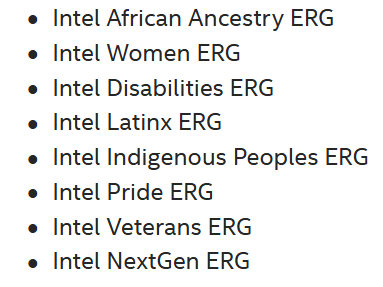Mid-March, Lip-Bu Tan took the spotlight as the newly appointed CEO of Intel (NASDAQ:INTC). The market reacted positively because Tan is a semiconductor veteran, both from the business and technical side.
Although Taiwan is effectively a US military protectorate, including TSMC as the world’s top chipmaker, the United States needs a domestic semiconductor power base. Intel’s previous CEO Gelsinger moved in that direction with heavy foundry investments, which eventually incurred Intel with a $18.75 billion net loss for FY 2024.
Investors are now asking if Tan can perform better than Gelsinger, or is there a momentum to such restructuring that has its own pace regardless of leadership?
At the Intel Vision 2025 conference in Las Vegas, Tan clarified what investors can expect.
New Intel CEO’s Keynotes
Tan began his address by acknowledging that Intel has to rebuild the eroded trust, having fallen behind in innovation and meeting clients’ needs. He stated his trademark motto as “underpromise and overdeliver”.
In terms of restructuring the company, Tan hinted that Intel’s middle-management bureaucratic layer is on the chopping block.
Rather, the focus will be on retaining and growing top engineering talent. As previously noted when covering Intel 18A, which is purportedly more performant than TSMC’s equivalent, it is critical for Intel to excite with innovation and performance.
Tan regretted that Intel’s talent base eroded over the years. This is why he intends to shift Intel’s beleaguered culture to one that nurtures “innovation and empowerment”. To leverage engineering talent properly, Tan reminded the audience that he made 251 semiconductor-related investments as a venture capitalist.
Of those, 43 were IPOs while 25 were successful mergers and acquisitions (M&A). In the foreseeable future under the AI umbrella, Tan sees three areas in which Intel needs to gain a large stake:
- Cloud & hyperscale AI
- Generative & agentic AI
- Physical AI
To make that happen, Tan will shift Intel’s focus on “software first design mindset”. This is likely a reference to Nvidia’s, which created a full-stack framework in sync with the company’s GPUs and AI chips. In turn, Nvidia (NASDAQ:NVDA) rapidly gained over 80% of market share in this emerging market.
Tan pointed out that Intel has had a track record of first creating hardware, without much worrying about the software supporting it. Tan sees the need to “flip that around”.
In other words, Intel’s pipeline will focus on “what are you trying to solve, and the workloads you need to handle, and then we work backward from that.”
Intel’s Future Products
Following Intel’s new software first design approach, Intel will leverage “AI-driven system design” to end up with “purpose-built silicon”. This should deliver products tailored for specific applications, potentially increasing Intel’s revenue by expanding its core business model.
In the intermediate H2 2025 future, Tan counts on the aforementioned 18A (Panther Lake) rollout as Intel’s most cost-efficient process yet, having integrated RibbonFET with PowerVia technologies. Tan sees this as a stepping stone to “anticipate the future”. By that, he refers to the generative AI needs for high computational performance at lower power drain.
Case in point, Apple (NASDAQ:AAPL) is working hard to implement on-device AI, which would make it less reliant on cloud infrastructure, but also be responsive to users’ needs in real-time. To that end, Tan will push for first-time pass (FTP) culture, but he readily admits that Intel is not there yet.
When it comes to securing Intel’s foundry business, Tan is looking to make its supply chains “flexible, resilient and secure”, which is needed to meet customers’ unique chip design and methodology.
Lastly, Tan acknowledged what we’ve emphasized all along, that Intel is an essential business unlike other companies, being the only US-based chip design and manufacturing company at scale.
The Bottom Line
Intel CEO Lip-Bu Tan reiterated multiple times that Intel needs to deliver on time and on quality to “exceed your expectations”. But as any company’s future relies on its personnel, it is yet to be seen how Tan tackles personnel restructuring.
At press time, Intel’s official website still makes tribute to boutique social engineering. Namely, its Employee Resource Groups (ERGs), which are company-sponsored networks.

Investors should ask themselves, was Intel built with this fragmentation in mind, or even better, does China have this approach for its companies? Under the Trump administration, it is definitely the case that Tan wil have free hands to cut Intel’s bloat that detracts from its core business.
At the moment, against the INTC stock priced at $21.86, WSJ forecasting points to the average price target of $25.24. The low estimate is $18 while the top is $100 per share, making for a drastic upside potential if Tan indeed over delivers.
***
Neither the author, Tim Fries, nor this website, The Tokenist, provide financial advice. Please consult our website policy prior to making financial decisions.
This article was originally published on The Tokenist. Check out The Tokenist’s free newsletter, Five Minute Finance, for weekly analysis of the biggest trends in finance and technology.
